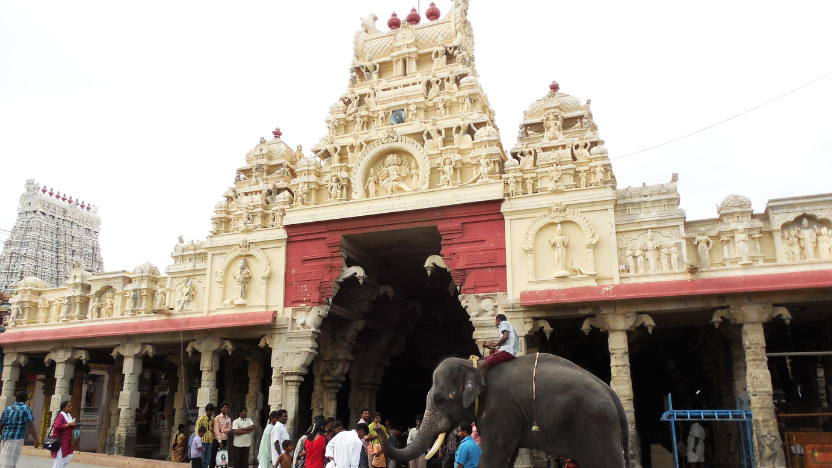Believed to be over 2,000 years old, the temple is one of the very few religious sites in India to hold ISO certification, la modern recognition of its preservation and management. References to Thiruchendur can be found in many revered Tamil works such as Purananuru, Silappadikaram, Tirumurugatrupadai, Adi Sankara’s Sri Subramanya Bhujangam, Kanda Puranam, and Tiruppukazh, each testifying to its spiritual and cultural significance.
According to ancient legend, Lord Murugan chose this very site to offer prayers to his father, Lord Shiva, after his victory over the demon Surapadman during the celestial war known as Surasamharam. The idol within the sanctum is sculpted in a unique posture depicting Murugan himself in prayer, symbolising humility even in triumph.
Like many age-old temples of India, Thiruchendur carries with it tales that blend history, faith, and mystery. One of the most remarkable among them dates back to the 17th century, during the era of European expansion across Asia. When Dutch soldiers landed in the region, driven by greed and the lure of wealth, they plundered the temple and seized its sacred Panchaloha (five-metal) idol of Lord Murugan, mistaking it for solid gold.

They loaded their loot onto ships and set sail, unaware that divine retribution awaited them. As the legend goes, a violent storm struck their vessel shortly after they left the shore. Terrified and believing it to be the wrath of the deity they had wronged, the sailors threw the stolen idol into the sea. Miraculously, the storm subsided the moment the idol touched the water.
Back at Thiruchendur, a temple priest soon dreamt of Lord Murugan instructing him to retrieve the idol from the ocean. The Lord revealed that a floating lemon would mark the spot where the idol lay hidden beneath the waves. Guided by faith, the priest and a group of fishermen ventured into the sea, and as foretold, they discovered a lemon adrift. Diving deeper, they found the sacred idol resting peacefully on the ocean bed.
Centuries later, in 2004, the Thiruchendur Temple became the site of yet another miracle. When the devastating tsunami struck the Tamil Nadu coast, destroying entire towns and villages, the temple situated barely 50 metres from the shoreline stood untouched. Every devotee within its walls survived unharmed, and the sea, once again, seemed to acknowledge the sanctity of Murugan’s abode.
Source / Image Credit : The Better India , Facebook1 , Facebook2
